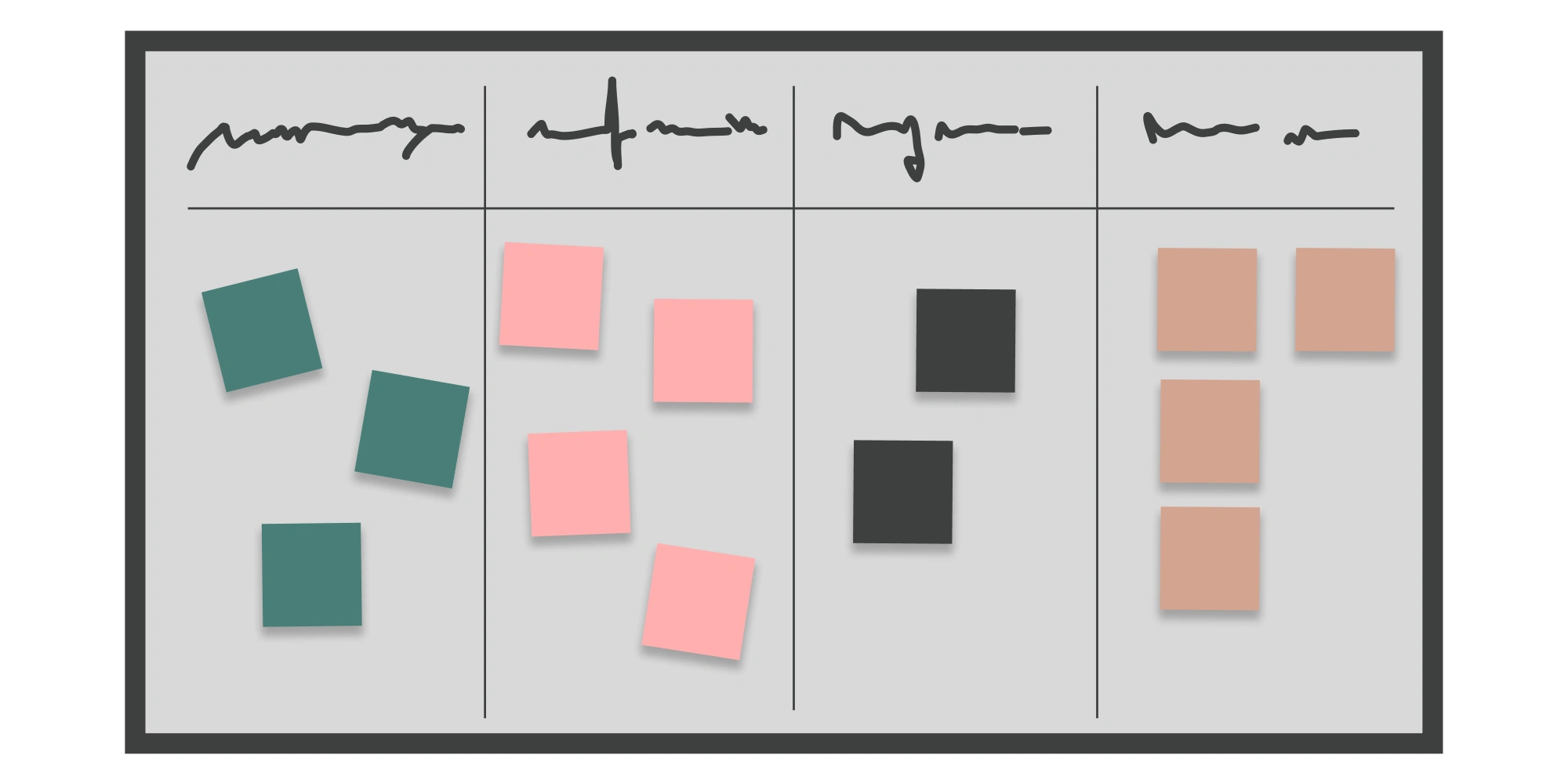The Kanban method and boards: principles and best practices for visual Agile project management
Estimated reading time : 8 minThe Kanban method, meaning “signboard” in Japanese, emerged in Japanese companies in the 1950s as a way to manage work. It relies on cards that represent tasks placed on a board according to their progress. These cards move from one column to the next throughout the process, providing a clear visualization of the workflow. Today, Kanban applies to many management areas—from project tasking to inventory, HR, and customer operations.
In project management, Kanban lets every team member see at a glance their own tasks and the progress of others. It also makes real-time updates to work in progress easier, ensuring better coordination and communication across the team. It helps spot delays, bottlenecks, and obstacles that could slow the project.

The 3 principles of the Kanban method
Kanban is built on three fundamental principles:
- Start with what you do now: thanks to its flexibility and simplicity, Kanban adapts to existing workflows and processes without changing established practices, roles, or responsibilities.
- Embrace evolutionary, incremental change: prefer small, continuous adjustments over abrupt transformations to ensure higher success rates and more durable change.
- Encourage leadership at every level: every participant—leader, contributor, or even customer—should be able to contribute. Gathering observations from all sides fuels continuous improvement and allows ideas to emerge from anywhere.
Six core practices have been identified over time for implementing Kanban:
The 6 core Kanban practices
1. Visualize the workflow: The workflow must be visible and understandable to everyone. Kanban recommends a board with columns and cards, each card representing a task. A classic board uses “To do”, “In progress”, “Blocked/Waiting”, and “Done”, with cards moving left to right. In practice, the board mirrors your real workflow: column titles and counts vary by need. Visual cues—colors, icons, tags, texts—can enrich cards with assignees, progress, or due dates.
2. Limit work in progress (WIP): Multitasking reduces efficiency. For each column, set a maximum number of active items to keep workloads manageable for both contributors and the project lead. Adjust limits to team capacity. When a column is full, a card can only enter once another leaves. This reveals stress points in the workflow and guides improvements.
3. Manage flow: Avoid blockages by monitoring and assessing how work moves. Collect and analyze key metrics such as dwell time per column, lead time across the whole board by segment, and throughput over a period. Define clear measurements to continuously analyze and optimize flow performance.
4. Make process policies explicit: The process must be clearly defined, shared, and understood by all. Establish precise rules for when, why, and how a card moves columns—and how those transitions affect the team. These policies are the backbone of Kanban and should be agreed upon by everyone for effective execution.
5. Implement feedback loops: Create channels and moments to gather input from two key groups: customers and the team. Fast customer feedback ensures the product remains aligned with expectations and enables timely workflow adjustments. Team feedback highlights difficulties, obstacles, and perceived workload, and fosters continuous improvement with ideas for both product and process.
6. Improve collaboratively and continuously: Kanban favors progressive rollout and a constantly evolving system aimed at ongoing improvement. When the above practices are applied, this dynamic emerges naturally—provided teams share a common view of the workflow, the customer is involved, and dialogue remains open at all times.
When to use the Kanban method
Kanban is not just sticky notes on a wall. It’s a daily discipline to instill and embed a philosophy within the team. Implementation depends on a deep understanding of your workflows so you can design a relevant board for everyone. It requires an organization capable of adapting continuously and questioning itself to keep improving processes.
It is often used alongside other methods when projects are complex with strong interdependencies.
Kanban is ideal where a flexible, visual task system is needed. It suits organizations that prioritize transparency, responsiveness, and continuous improvement, and works particularly well where tasks can progress independently.
This method combines simplicity with real-time visualization of work in progress to ease collaboration and prevent overload.
Discover other project management methods
Orchesia: build and track your Kanban boards
With Orchesia, once your project is defined, structured, and sequenced, it’s time to track!
Orchesia offers multiple views to fit your needs: List, Calendar, and Kanban.
In the Kanban view, identify and shape your workflow so each task fits naturally into your process without blockages. This visual, flexible view adapts to your needs and evolves through testing and retrospectives.
With our Kanban board, limit WIP, collaborate in real time, and monitor team performance.
Try our project management software Orchesia free for two weeks, no commitment!